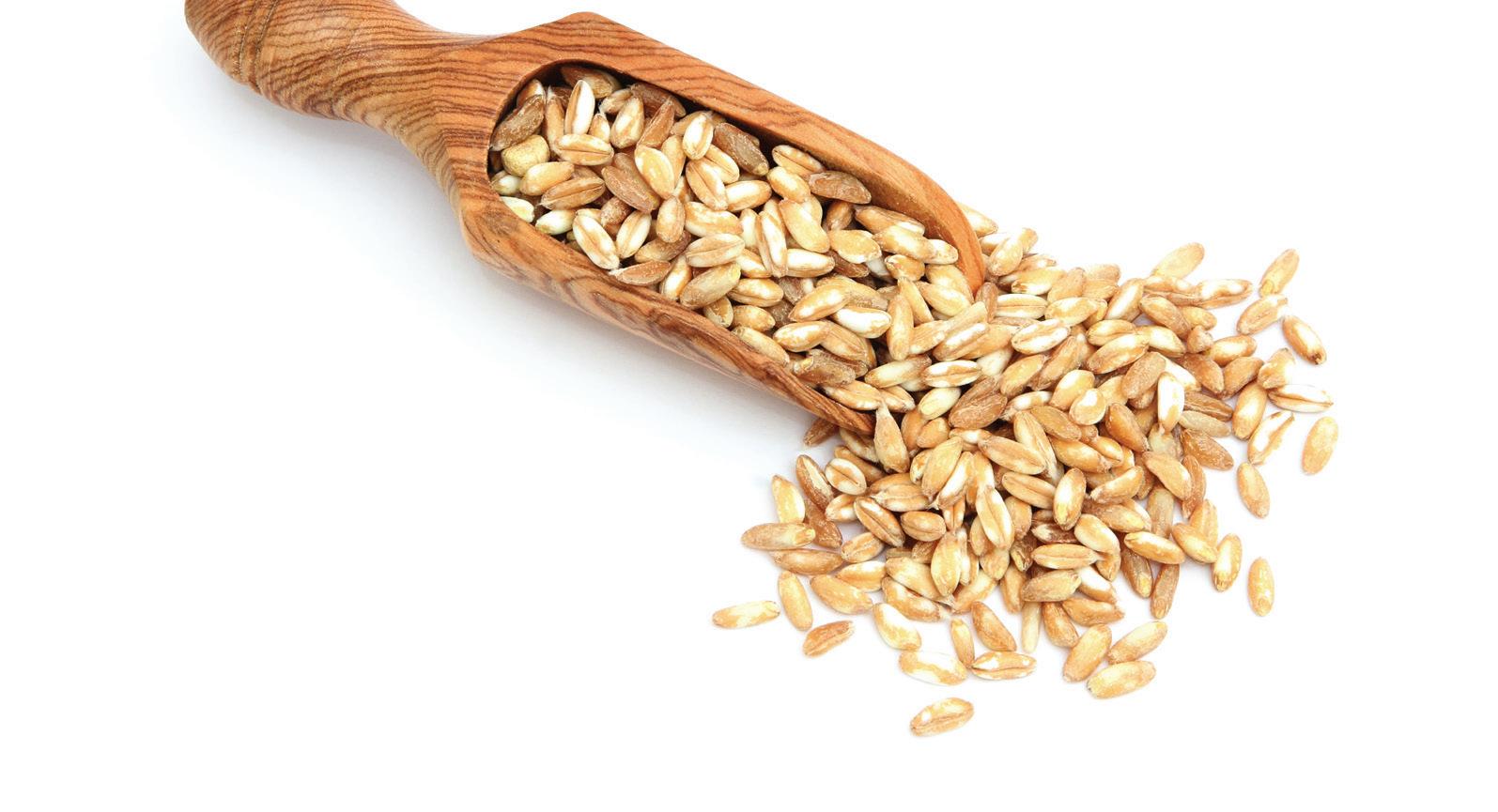
3 minute read
Ingredient

Favoring Farro
An ancient grain with a modern-day success story
BY ERIK TORMOEN
It stocked the tombs of Egyptian kings and reportedly fed the Roman legions. It sprouted in the Fertile Crescent—the Middle Eastern birthplace of agriculture. Centuries later, it grew popular in the U.S. around 2010 as Italian specialty stores and celebrity chefs like Mario Batali placed it squarely before home cooks. Good in dishes like risotto, salad, soup and oatmeal, this nutrient-rich, light brown wheat grain has since become a favored American stand-in for rice. It’s chewy, it’s hearty, it’s nutty. It is farro.
“Couldn’t have happened to a nicer grain,” chef Robin Asbell tells me by phone, referring to the fact that I’m calling her—a culinary consultant to the Whole Grains Council and the author of two whole-grain-focused cookbooks—simply to talk about farro. Why do we love it? Why should we love it? The recent “ancient grains” craze has made farro more available to home cooks, and I tell Asbell that I, along with half the country (according to at least one estimate), have been cooking more because of the pandemic. In my hunt for variety, I have lately picked farro where more common carbs—like rice and the crowned queen of ancient grains, quinoa—used to dominate. Nutritionally, farro packs more of a punch than rice, especially in protein and fiber (where it beats quinoa, too). But I’m a kitchen novice. Why should I be favoring farro and not any other nutrient-dense, pedigreed grain like barley, sorghum or teff?
For Asbell, it boils down to a pretty simple question: What’s the dish? “Farro does have a really uniquely delicious flavor,” she says. “It’s just got a really caramelly sweetness to it.” It pairs well with olive oil, garlic, basil, rosemary, chickpeas, Tuscan beans and other Italian flavors. There’s a reason Italian celebrity chefs started promoting it, after all. “It’s got a lovely, authentic taste that you know is going to work with the flavors of that cuisine,” she says. (For a Mediterranean salad recipe by Asbell that uses farro, see page 26.)
But before you get to cooking, you’ll first need to select some farro in the store. Farro, a wheat grain, comes in three varieties: einkorn, spelt and emmer. The differences aren’t many, although emmer, a harder grain than einkorn, is most common in the U.S. “Years ago, when it was first coming out, I talked to some guys who were saying, ‘Change two genes in it, and it’s spelt!’” Asbell recalls. Just bear this in mind as you’re scanning the aisles.
You’ll also want to pay attention to whether you’re buying whole, pearled or semi-pearled farro. Whole farro has an outer layer of bran that requires an overnight soak. “If you want a grain that’s going to pop and have more chewiness to it, you go with the whole,” Asbell says. It makes for a satisfyingly al dente bite in salads and soups, and won’t turn to mush after soaking in the refrigerator for a few days.
Pearled and semi-pearled farro are more commonly sold in the U.S. The “pearling” process removes, or partially removes, the outer layer of bran, making it texturally closer to rice. It’s an abrasive process that shears away some fiber and nutrients, too—but the result is a farro that cooks faster: Just boil and let simmer. It does especially well in risottos, and semi-pearled should also hold its shape in a soup.
Farro is versatile: You can top it with roasted fruit and yogurt, stuff it in grape leaves and apply it to pilafs. Some chefs have even constructed veggie burgers out of it.
“Twenty years ago, there wasn’t really farro to be found,” Asbell recalls. Like quinoa (“another little hippie grain”), media attention has secured it a place in U.S. pantries. Farro may still feel like quinoa’s less popular, non-gluten-free cousin. But Asbell says she’s noticed the gluten-free diet declining as a trend, as opposed to a health recommendation for those with celiac disease. She hopes a wheat grain like farro can steepen its ascent.
Moreover, she describes a recent call she had with the Whole Grains Council—where a member recalled the initial pandemic panic that cleared grocery shelves of white-flour foods—and muses, “I hope that being stuck at home and wanting some variety has led more people to try it.”










